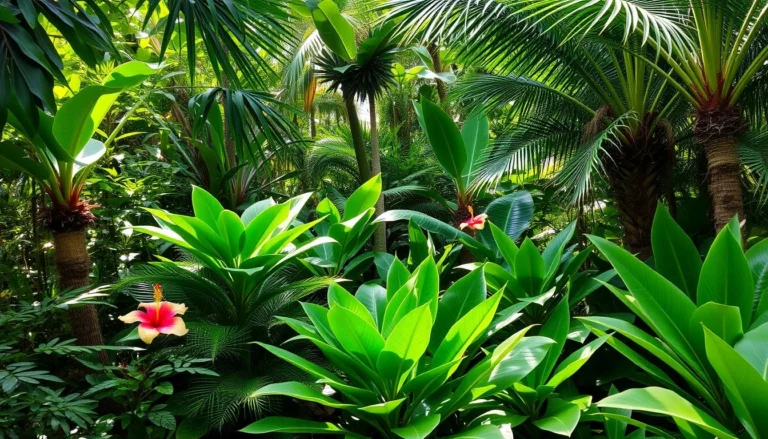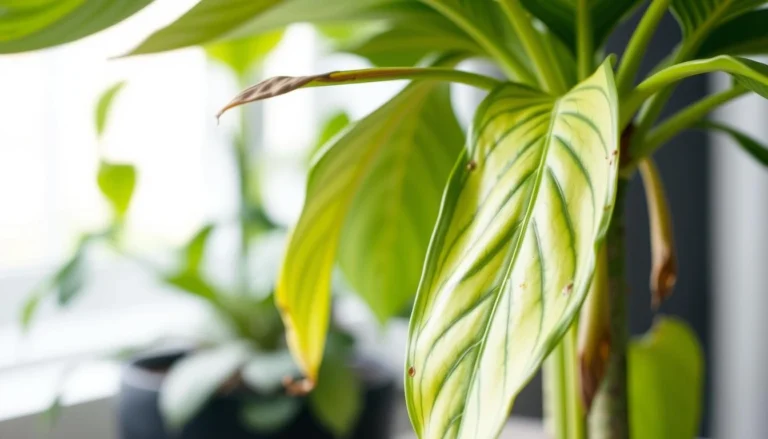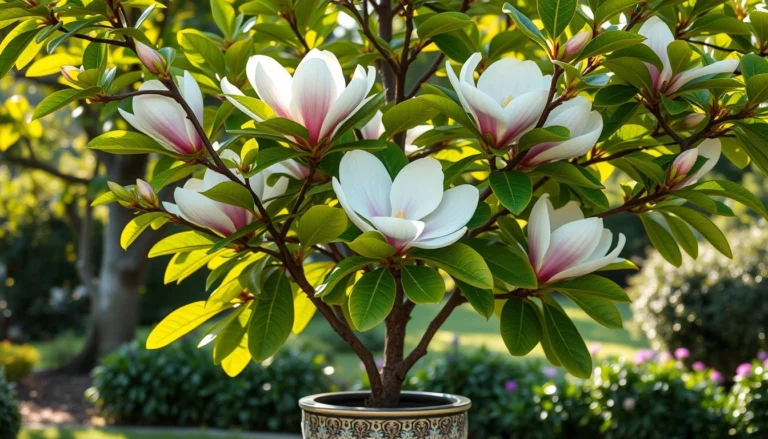“Unveiling the Secrets: 4 Exceptional Tips for Thriving Succulent Plants”
In a sun-drenched patio corner, a vibrant1 Jade Plant stood out, its thick leaves soaking up the sun. Tending to it, I was amazed by its toughness and beauty. Succulents, like t e Jade Plant, are incredible, thriving where others might not.
Whether you’re a seasoned gardener or new to plants, this guide will help your succulents2 Echeveria ‘Blue Surprise’ and others grow well.
Table of Contents
Key Takeaways
- Discover expert tips for growing thriving succulent plants
- Learn how to care for drought-tolerant succulents and create stunning displays
- Gain insights on light requirements, watering techniques, and soil needs for successful succulent cultivation
- Explore ways to prevent common pests and diseases that can affect your succulent plants
- Uncover the secrets to healthy growth and vibrant colors in your succulent garden or indoor oasis
With the right care, your1 Jade Plants2, Echeveria ‘Blue Surprise’, and other succulents can thrive. They’ll bring desert beauty to your spaces. Get ready to enhance your gardening or indoor decor with these low-maintenance wonders.
Light Requirements for Jade Plants
Jade plants love sunlight and are part of the succulent family3. Knowing what light they need is key for their health and growth3.
Outdoor vs. Indoor Jade Plant Lighting Needs
Jade plants need bright, indirect sunlight3. Outdoors, they should get at least 6 hours of sunlight daily3. But, too much direct sunlight can cause sunburn, leading to brown spots on leaves3.
Indoors, place them near a sunny window for the right amount of light3. If it’s too dark, older jade plants might not grow well3.
Dealing with Common Pests and Diseases
Jade plants can face pests and diseases if not cared for right4. Problems like mealybugs, scale, and powdery mildew can occur4. Regular checks and quick action can keep your plant healthy4.
Also, wash outdoor jade plants before moving them inside to avoid pests4.
Knowing about light needs and pests can help your jade plant thrive indoors or outdoors34.
Ideal Size and Growth Potential
Jade Plants are known for their impressive size and growth potential. They are a versatile choice for both indoor and outdoor gardens. In Southern California, Jade Plants can grow up to 9 feet tall, but they are usually seen between 3-4 feet tall5.
For indoor Jade Plants, they are often sold in 4, 6, and 8-inch pots. They can reach a height of about 1 foot5.
Hedge Potential and Bushier Growth Tips
Jade Plants have a unique feature: they can be used as hedges in Southern California. They can grow quite large, with some even supporting lemon trees. To promote bushier growth, you can pinch off the tips of branches. This encourages branching and makes the plant fuller5.
“Jade Plants can be a stunning addition to any garden, with their ability to grow into impressive, hedge-like structures that can even support other plants like lemon trees.”
| Jade Plant Size Range | Container Recommendations |
|---|---|
| 3-4 feet (common) to 9 feet (maximum) | 4, 6, and 8-inch pots (indoor) |
| Up to 9 feet (in Southern California) | No container needed (outdoor hedge) |
Understanding Jade Plants’ size and growth helps gardeners choose the right container. It also helps plan for their hedge-like potential and maintain a bushier look through pruning5. With the right care, Jade Plants can thrive and become a stunning feature in any space6.
Proper Watering Techniques
Keeping your jade plants watered right is key to their health and life span. Many gardeners make the mistake of watering too much, which can cause root rot and kill the plant7. To avoid this, water your jade plants in the garden every 8 to 14 days, based on the weather7. If your jade plants are in pots, they might need more water, but always check the soil first.
Avoiding Overwatering Mistakes
It’s important to prevent jade plants from getting too much water7. Make sure the soil drains well and doesn’t stay wet for too long7. The “soak and dry” method works well. It means soaking the soil well and then letting it dry out completely before watering again7. This method helps avoid root rot and other problems caused by too much moisture7.
Monitoring Soil Moisture Levels
Checking the soil moisture regularly is crucial for your jade plant’s health7. If your plant’s leaves are wrinkled, bendy, or crispy, or if it looks smaller, it’s time to water7. By letting the soil dry out between waterings and ensuring good drainage, you can prevent overwatering and help your jade plant grow well7.
“Proper watering is the key to a healthy, happy jade plant. By following these techniques, you can ensure your plant gets the right amount of moisture it needs to thrive.”
Succulent Plant
Succulent plants, like the Jade Plant, are amazing. They attract gardeners and nature lovers. These plants can live in dry places, making them great for homes and gardens, especially where water is scarce8.
There are many types of succulents, each with its own look and color. They can store water in their leaves, stems, and roots. This lets them go without water for a long time8.
- Nearly all cacti are succulents, but not all succulents are cacti8.
- Water content of succulent organs can reach up to 90–95%8.
- More than 25 plant families have multiple succulent species within them8.
- Succulents can survive in ecosystems with limited water sources like mist and dew8.
- South Africa is home to about a third of all succulent species8.
- Cacti and succulents form a monophyletic group8.
- There are about 60 different plant families that contain succulents8.
- In South Africa, some succulent species have been threatened with extinction due to poaching and mining activities8.
- Succulents can grow in most indoor environments with minimal care8.
- There is a thriving illegal trade in cacti and succulents8.
- California is home to close to a hundred native succulent species8.
- Succulents can last up to two years without water, depending on their surroundings and adaptations8.
There are many unique succulent varieties to explore. Their identification numbers range from9 7361731919938 to 7360469237826 and beyond. You can find them by their series, like9 7155160514626 or9 7141314854978. They also have special codes, such as9 7363504504898 and9 6542915371074.
Whether you’re new to gardening or have been doing it for years, succulents are exciting. They offer endless ways to create beautiful displays. Dive into the world of succulents and show off your green thumb!

Choosing the Right Soil for Jade Plants
Choosing the right soil is key for healthy jade plants. Jade plants need a special soil mix that’s different from other succulents. The best soil for jade plants is not the same as for cacti or other succulents10.
Jade Plants vs. Other Succulents
Jade plants like slightly acidic soil with a pH of 6.0 to 7.011. This pH helps them absorb nutrients well. They also need well-draining soil to avoid root rot, a common problem10.
Benefits of Succulent and Cactus Soil Mix
A mix made for succulents and cacti is great for jade plants. It has sand, perlite, and peat moss for fast drainage and nutrients10. This mix helps jade plants grow well by keeping the right balance of moisture11.
To make the soil even better, add coarse sand or pumice for better drainage and air10. Refreshing the soil every 2-3 years keeps it rich in nutrients10.
“Choosing the right soil is the foundation for a thriving jade plant. With the proper soil mix, you’ll be well on your way to cultivating a healthy, vibrant garden addition.”
Knowing what jade plants need and picking the right soil mix is crucial. It helps your jade plant grow well and reach its full potential11.
| Soil Characteristics | Ideal for Jade Plants |
|---|---|
| pH Level | 6.0 – 7.0 (slightly acidic) |
| Drainage | Well-draining |
| Key Ingredients | Sand, perlite, peat moss |
| Repotting Frequency | Every 2-3 years |
Fertilization Tips for Thriving Jade Plants
Keeping your jade plants healthy means choosing the right fertilizer. Both organic and synthetic options work well, but knowing their differences is key. This ensures your jade plants stay healthy and strong12.
Organic vs. Synthetic Fertilizers
Organic fertilizers, like worm castings, give nutrients slowly. This helps the soil stay healthy and balanced12. Jade plants like this steady feed, as they prefer moist, well-draining soil. Synthetic fertilizers, however, give a quick nutrient boost. But, they must be used carefully to avoid harming the soil12.
Avoiding Over-Fertilization
Don’t overdo it with the fertilizer, as it can harm your jade plants. They only need a yearly feed. Make sure to follow the right amount and timing for your plant’s type12. Watching how your plant reacts and adjusting as needed will keep it healthy and happy13.
| Fertilizer Type | Nutrient Release | Soil Health Impact | Recommended Application |
|---|---|---|---|
| Organic | Slow and steady | Improves soil structure and microbial activity | Once a year, during the growing season |
| Synthetic | Immediate and concentrated | Can lead to salt build-up if over-applied | Once a year, during the growing season |
Understanding your jade plants’ needs and using a balanced fertilizer plan is key. This approach ensures they stay healthy and vibrant. Remember, patience and moderation are essential for these hardy plants1213.

Understanding Your Light
Proper lighting is crucial for a thriving jade plant. Assessing the natural light in your space is key for your plant’s growth. Look for areas where sunlight enters well and note dim spots14. Place plants needing lots of light near windows or bright spots14.
Use a light meter to check light intensity in your home15. This helps find the best spot for your plants15. The light your jade plant gets affects its growth and health14. So, getting the lighting right is vital for your jade plant’s success.
“Optimal lighting conditions are essential for the health and growth of your jade plant. By understanding the light requirements and adjusting the plant’s placement accordingly, you can ensure it thrives for years to come.”
Succulents, like jade plants, need different amounts of light1415. Some need full sun, while others do well in partial shade or low light1415. By watching your home’s light levels and moving your jade plant, you can make a great spot for it to grow.
Watering Wisely
Proper watering is key for your plants’ health. Before you water, check the soil moisture by sticking your thumb in about an inch. If it’s dry, it’s time to water16. Adjust how often you water based on the season and weather, as plants need more water in warm months and less in winter16.
Using warm water instead of cold can help your plants grow better. It makes it easier for roots to absorb nutrients16.
Check Soil
Make sure your plants have good drainage. Use a saucer under planters to catch excess water. This prevents roots from sitting in water16. Overwatering is a big mistake that can cause root rot. So, it’s important to water based on each plant’s needs16.
Adjust Frequency
Succulents need water when the soil is dry. This can be every two weeks to every two months, depending on the plant and environment16. Smaller succulents in smaller pots need more water than bigger ones16. If succulents don’t get enough water, they’ll show signs like shriveled leaves and dying roots16.
Use Warm Water
Warm water is better for plant roots than cold tap water. It helps them grow and absorb nutrients better16.
Excess Water
Use a saucer under planters to catch excess water. This keeps roots from sitting in water16. Decorative pots without holes can cause overwatering if not removed16.
Avoid Overwatering
Don’t overwater, as it can harm your plants. Develop a watering schedule for each plant to avoid this16. Water lightly and let the soil dry out between waterings. This keeps your plants healthy16.







